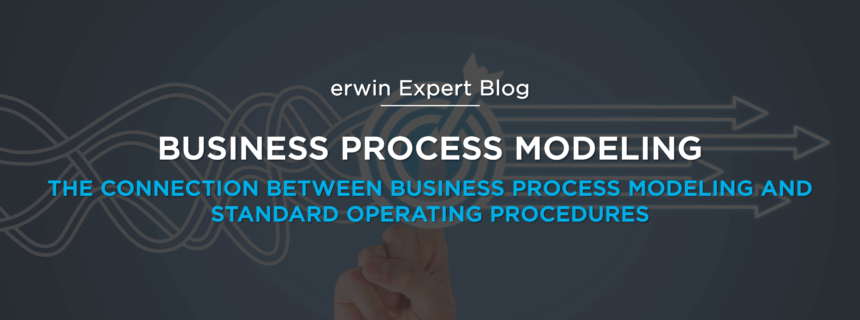The Connection Between Business Process Modeling and Standard Operating Procedures

We began a new blog series last week on business process (BP) modeling and its role within the enterprise. This week’s focus is on the connection between business process modeling and standard operating procedures. Specifically, using BP tools to help organizations streamline how they manage their standard operating procedures (SOPs).
Standard Operating Procedures: A New Approach to Organizing SOP Information
Manually maintaining the standard operating procedures that inform business processes can be a monster of a task. In most industries, SOPs typically are documented in multiple Word or Excel files.
In a process-centric world, heavy lifting is involved when an organization requires a change to an end-to-end process: Each SOP affected by the change may be associated with dozens or even hundreds of steps that exist between the start and conclusion of the process – and the alteration must be made to all of them wherever they occur.
You can imagine the significant man hours that go into wading through a sea of documents to discover and amend relevant SOPs and communicate these business process-related changes across the organization. And you can guess at the toll on productivity and efficiency that the business experiences as a result.
Companies that are eager to embrace business process optimization are keen to have a better approach to organizing SOP information to improve transparency and insight for speedier and more effective change management.
There’s another benefit to be realized from taking a new approach to SOP knowledge management, as well. With better organization comes an increased ability to convey information about current and changed standard operating procedures; companies can offer on-the-fly access to standard practices to teams across the enterprise.
That consistent and easily obtained business process information can help employees innovate, sharing ideas about additional improvements and innovations that could be made to standard operating procedures. It could also save them the time they might otherwise spend on “reinventing the wheel” for SOPs that already exist but that they don’t know about.
Balfour Beatty Construction, the fourth largest general builder in the U.S., saw big results when it standardized and transformed its process documentation, giving workers access to corporate SOPs from any location on almost any device.
As a construction company, keeping field workers out of danger is a major issue, and providing these employees with immediate information about how to accomplish a multi-step business process – such as clearing a site – can promote their safety. Among benefits it saw were a 5% gain in productivity and a reduction in training time for new employees who were now able to tap directly into SOP data.
Using Business Process Modeling to Transform SOP Management
How does a company transform manual SOP documentation to more effectively support change management as part of business process optimization? It’s key to adopt business process (BP) modeling and management software to create and store SOP documentation in a single repository, tying them to the processes they interact with for faster discovery and easier maintenance.
Organizations that move to this methodology, for example, will have the advantage of only needing to change an affected SOP in that one repository; the change automatically will propagate to all related processes and procedures.
In effect, the right BP tool automatically generates new SOPs with the necessary updated information.
Such a tool is also suitable for use in conjunction with controlled document repositories that are typically required in heavily regulated industries, such as pharmaceuticals, financial services and healthcare, as part of satisfying compliance mandates. All SOP documentation already is stored in the same repository, rather than scattered across files.
But a business process diagramming and modeling solution comes in handy in these cases by providing a web-based front-end that exposes high-end processes and how they map to related SOPs. This helps users better navigate them to institute and maintain changes and to access job-related procedure information.
To find out about how erwin can streamline SOP document management to positively impact costs, workloads and user benefits, please click here.
In our next blog, we’ll look at how business process modeling strengthens digital transformation initiatives.

